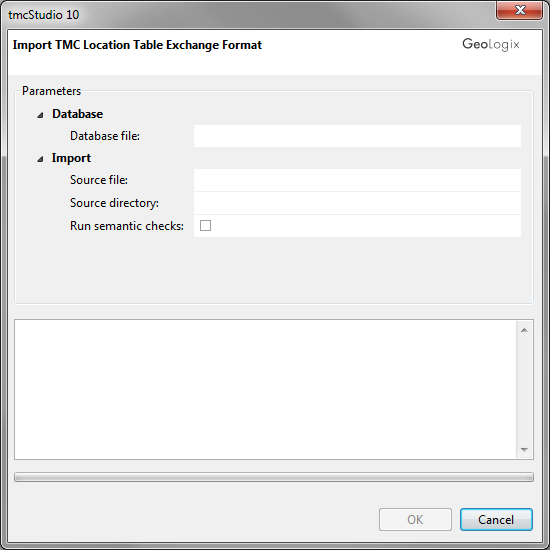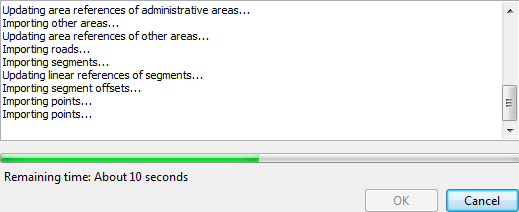Difference between revisions of "Import Location Table Exchange Format"
| Line 16: | Line 16: | ||
'''Source file''' | '''Source file''' | ||
| − | :If your Location Table file comes as a ZIP-file (file format: *.zip), browse for it on your computer and define it here. If your Location Table consists of a number of DAT-files (file format: *.dat) leave this field | + | :If your Location Table file comes as a ZIP-file (file format: *.zip), browse for it on your computer and define it here. If your Location Table consists of a number of DAT-files (file format: *.dat) leave this field blank and use '''Source directory''' instead: |
| Line 23: | Line 23: | ||
| − | |||
| − | |||
| − | |||
And lastly, the function '''[[Semantic Checks|Run semantic checks]]''' has to be activated. | And lastly, the function '''[[Semantic Checks|Run semantic checks]]''' has to be activated. | ||
<br>[[File:RunSemanticChecks.png|link=|alt=]] | <br>[[File:RunSemanticChecks.png|link=|alt=]] | ||
Revision as of 08:58, 8 May 2012
![]()
The Import location table exchange format button opens the corresponding window:

In the window, fill in all fields according to the instructions below to import a Location Table.
Database file
- Here you need to define the database where the Location Table file can be imported to.
- Type in a complete file path to or browse for an existing and empty Firebird database (*.fdb) using the
 Folder button on the right of the text field. The database has to be stored locally (on your physical harddrive, NOT on a network drive or server!).
Folder button on the right of the text field. The database has to be stored locally (on your physical harddrive, NOT on a network drive or server!).
Source file
- If your Location Table file comes as a ZIP-file (file format: *.zip), browse for it on your computer and define it here. If your Location Table consists of a number of DAT-files (file format: *.dat) leave this field blank and use Source directory instead:
Source directory
- Browse for and indicate the directory where your Location Table (consisting of a number of files in DAT format) is stored. Those DAT-files have to be saved within one single folder. If your Location Table is a ZIP-file, leave this field empty and fill in the field Source file instead!
And lastly, the function Run semantic checks has to be activated.
![]()
Now the wanted data are imported, created and checked. This step may take some seconds.

When finished, due to the activation of the semantic check the codes with errors are shown.
To see them directly, Show Only Checks Containing Errors can be clicked.
